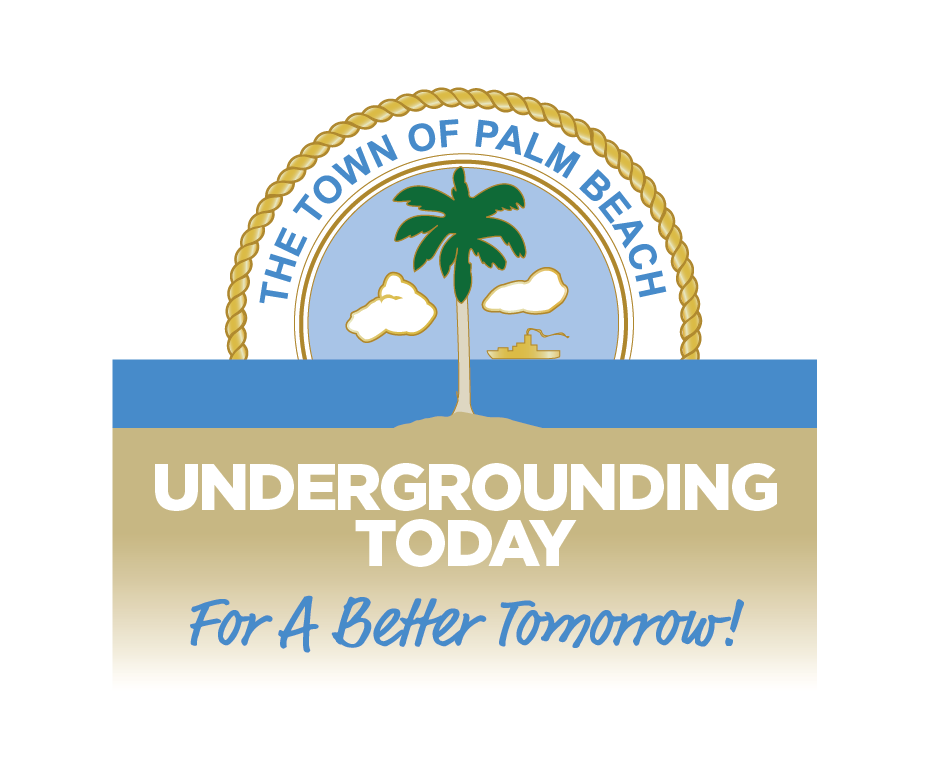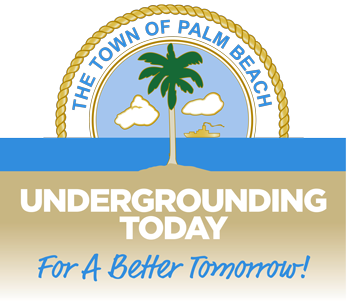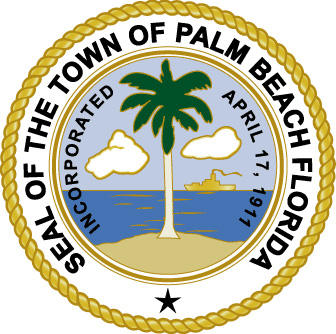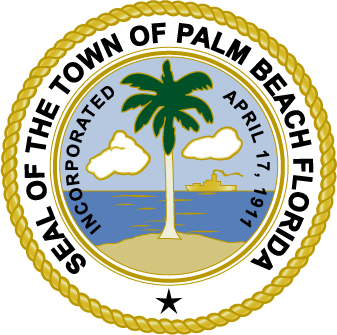More Q&A About Undergrounding
The Neighborhood Alliance of Palm Beach (NAPB) asked the Town of Palm Beach the questions listed below about the Undergrounding of Utilities Project. To ensure residents have accurate information about the undergrounding project, the Underground Utilities Task Force reviewed the questions, corrected inaccuracies and requested the answers be provided to NAPB as well as all Town residents. The answers to the questions asked by NAPB are below.
1. Is the budget being cut by reducing the quality of the wires for phone, cable and internet? Will these be state of the art now or 1980 quality? No. The budget has not been cut to reduce the quality of the communications facilities or the level of service. The Town reduced costs by negotiating with both AT&T and Comcast to use less project material by installing a single larger conduit for each provider rather than two smaller conduits for each provider which is their typical design. The quality of the wires within the conduits for phone, cable, and internet are top of the line regardless of how many conduits are installed.
2. How will this service be upgraded over the next 30 years as products improve? After the Town has converted the utilities to an underground location, it will be the responsibility of the individual utility owners (FPL, AT&T, and Comcast) to maintain and upgrade these systems in perpetuity. Just like with overhead utility lines, individual utilities will work with customers to improve and upgrade service.
3. What guarantees do we have that maintaining this new system will not mean increased rates imbedded in our bills though FPL says it won’t? FPL is regulated by the Florida Public Service Commission. They cannot arbitrarily raise rates just because an area has undergone an overhead to underground conversion.
4. Has the cost of drilling through coral where it exists on the island been included in this budget? Yes. The Master Plan that was created took into account the Town’s geology when creating the budget and method of underground installation.
5. How will FPL remove the poles? Across our properties? Will they pay for the damages to structures and landscape in the removal? FPL plans to remove the poles with use of cranes and pole climbers. When a pole cannot be feasibly lifted with a crane, they will cut it down in pieces and remove the pieces by hand to trucks located in the street. This is the typical process of how utility poles are removed.
The project contains a budget for general site cleanup. Landscaping that is damaged and is not located in an easement will be restored. Landscaping that is located in an easement or right of way that is damaged during pole removal will not be restored.
6. How much will it cost homeowners in older homes to upgrade their electrical system to accommodate the conversion? FPL has performed an inspection of electrical meters in Phase 1 and reported all meters met their specifications and no homeowner would need to upgrade their electrical system. The typical conversion requires no electrical modifications to be performed by the homeowner. On a rare occasion that a homeowner needed to upgrade their electrical system, it would only be due to their home’s electrical meter being out of compliance with code requirements. However, FPL recently converted all of its meters to Smart meters that can be read remotely. At that time any electrical meter boxes that did not meet code had to be upgraded to meet code. There is little chance that someone would have to upgrade their electrical meter box and zero chance that the electrical system inside the building will need to be modified.
7. How will the landscaping around these boxes look and how much needs exposure for access? Will we be looking at exposed boxes from inside our houses? Or will our neighbor if we face the open side toward him? Landscaping in front of transformers is part of the program master plan and is included in the project budget. Landscaping is being designed to screen the equipment from view from the street. Homeowners with easements are allowed to landscape the side facing the house with landscaping of their choice.
8. How can even this budget be relied upon since you reduced the contingency from 20% in the 90 Million estimate to 10% in this one? Is this a trick to make the medicine go down, knowing the cost, as in most other Town infrastructure projects, will far exceed this? The original contingency estimate was based on a budget developed by Town staff and the Public Works department. After working with Kimley-Horn for the last 9 months on a project master plan that reviewed the project in great detail, the contingency was lowered. The extra planning has allowed the Town to have a more comfortable expectation of project costs. This is the typical process for large scale public works projects. The Town has also approved a peer review to provide input on the project budget.
9. Why pretend the 10 million dollars for resurfacing of the roads after conversion damage moved to Public Works’ budget isn’t still coming out of the taxpayer’s pocket? How will services now provided by Public Works be affected with this additional responsibility? The Town’s Public Works department has always had the responsibility of maintaining Town roads in their annual budget. Every year, the Town typically budgets $500,000 for roadway paving costs. The resurfacing of roads is a service already provided to Town residents and will occur regardless if undergrounding occurs. It would not be fair to burden property owners with resurfacing roadways via use of special assessments when the Town’s annual budget has sufficient funding to cover roadway resurfacing.
10. Has the cost of litigating easements been included in the budget? Yes. A budget of $2,000,000 has been set aside for legal services. The litigation of easements rarely occurs because the Town works hard to satisfy the needs of property owners.
11. Is UUTF endorsing this project with a blank check? No. A blank check has not been issued and the UUTF has consistently looked for additional means to reduce costs. Ultimately, the UUTF will need to recommend and the Town Council will need to approve a program budget. The UUTF has recommended a funding mechanism to the Town Council that will ultimately reduce assessments and the amount of money that will be required to be borrowed on a long-term basis.
12. How many technical aspects are not reflected in this budget such as how to address fixes in flood prone areas? Technical aspects have been included in the project master plan. The Town is currently fed by utility lines that run below the intracoastal, has over 30 miles of undergrounded utilities on the Island, 380 pad mounted transformers and will be installing equipment that can withstand low levels of flooding. Drainage issues within the Town are addressed by Public Works under budgets not associated with undergrounding. The Town has experience in dealing with flooding on the Island and has pumps and additional equipment needed to deal with flooding issues if they were to occur.
13. How much is all the additional project-related staff going to cost? The fiscal year 2017 budgeted cost for the salary and benefits of a contractual underground utilities coordinator is $130,000.
14. What cost is calculated for legal fees for litigation, master planning and additional financing costs? Legal fees to secure easements, including litigation if needed, is $2 million. Master planning costs have been covered and are $597,895. Based upon the current proposed plan of finance there is no additional financing cost. The financing plan will reduce borrowing and assessment costs.
15. Are the savings touted really savings or are they costs shifted to property owners such as rear yard restoration and street lights? The project budget was reduced when the decision was made not to restore landscaping located in rear yard easements after pole removal. Street lights on the major arterial roadways that are eliminated with the utility pole removal will be replaced with street lights offered through FPL’s street lighting program. The Town already participates in this program since all of the lights being removed are already FPL owned. The Town currently only pays for the operating costs of these lights and this will be the same case with the replacement lights.
16. Has any utility agreed to deeper discounts that you are hoping for? Yes. FPL has proposed additional discounts subject to FPSC approval. This offer is under review by staff and consultants.
17. Is the scope of the peer review and entire project analysis not just where to cut costs? It should be. The Town of Palm Beach will move forward with a Peer Review of the Town-Wide Undergrounding of Utilities Master Plan, which includes the cost estimates, phasing and sequencing plans. A Peer Review selection committee has been created and will review the proposals and make recommendations to the UUTF and Town Council.





